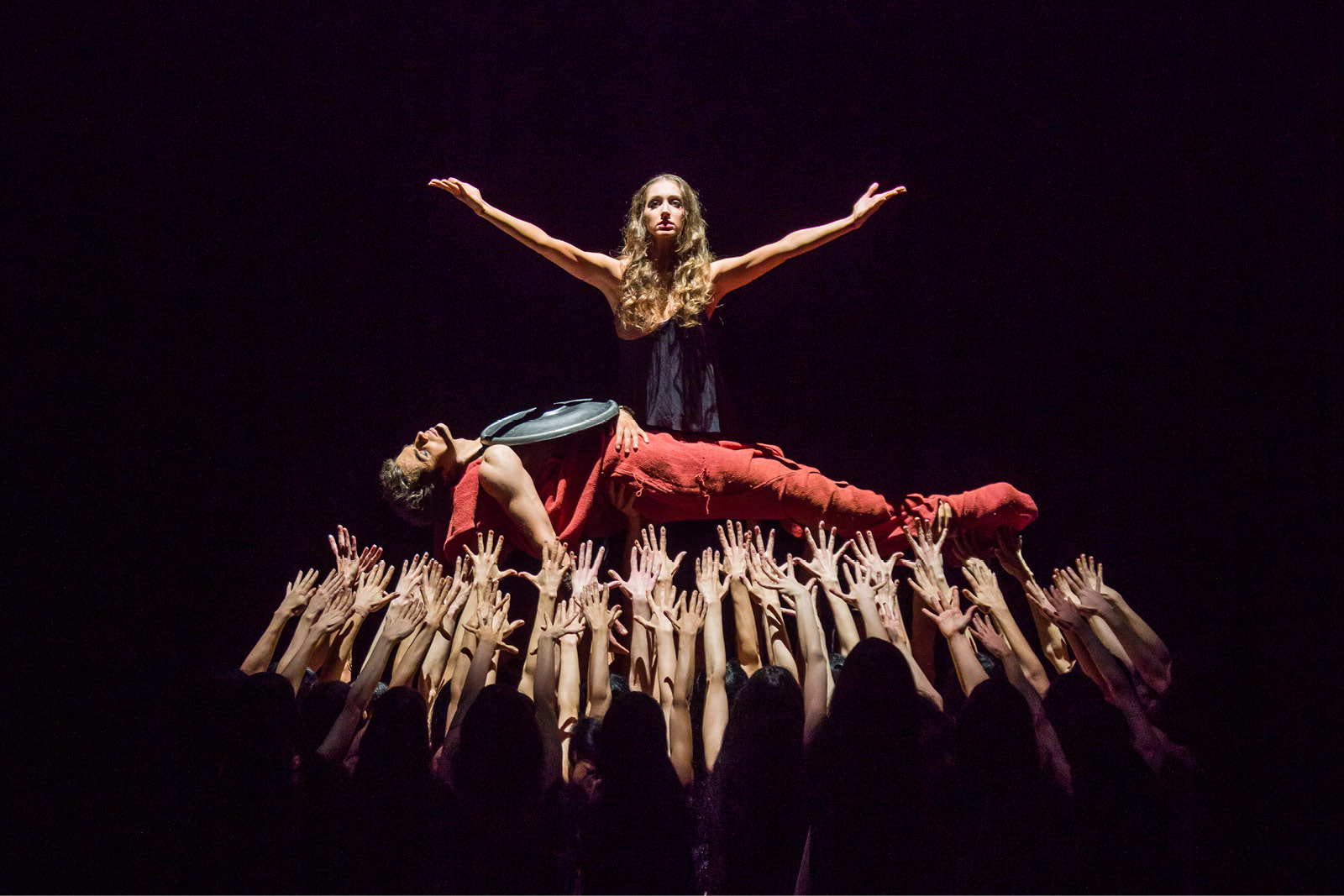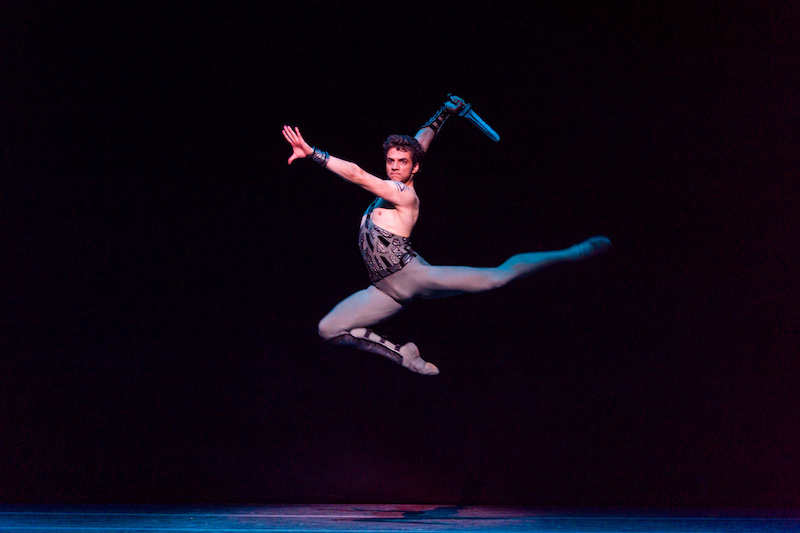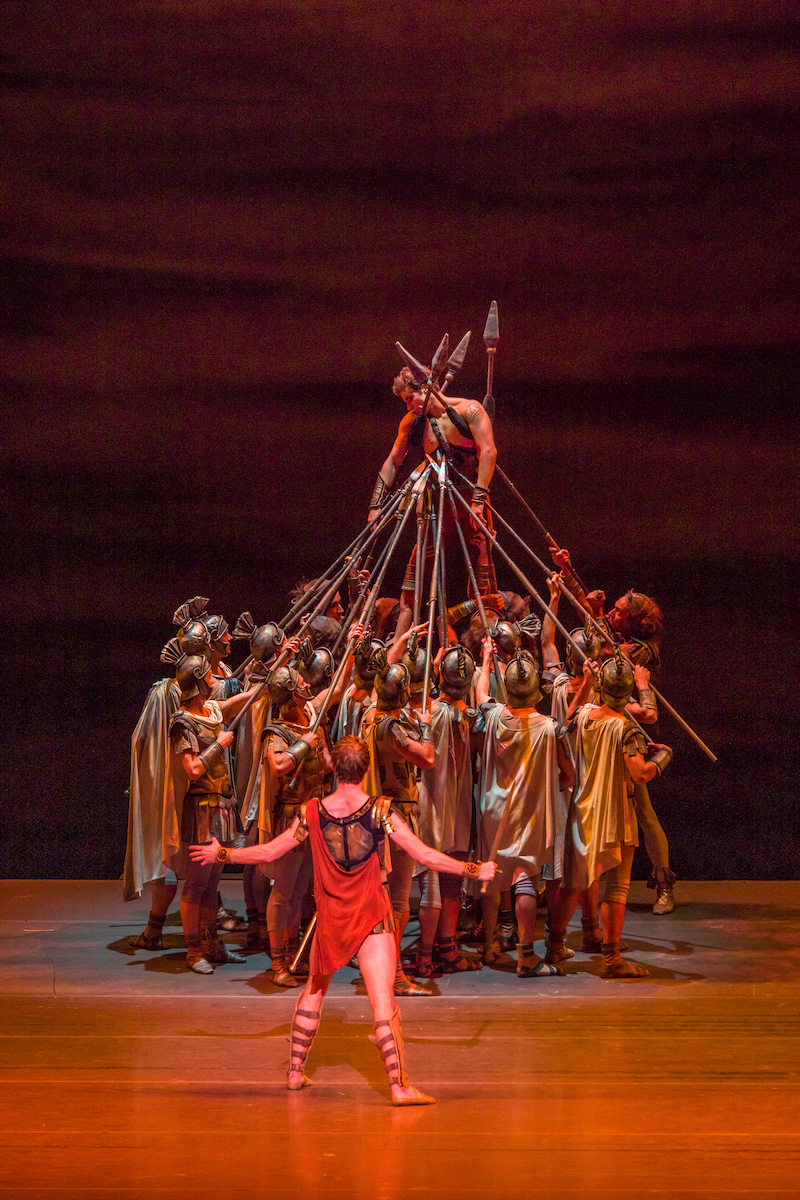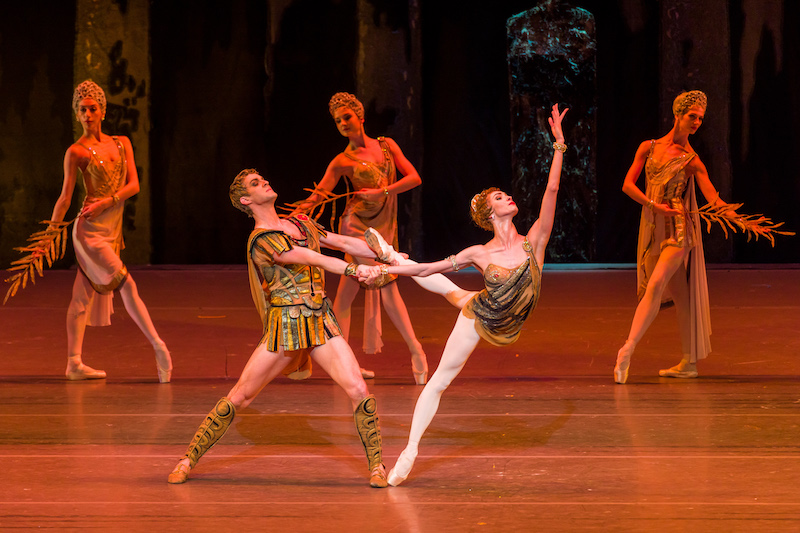There’s a tangible buzz in Brisbane right now at the arrival of the Bolshoi Ballet, one of the world’s great ballet companies, and certainly one of the most popular with the public. Having performed in Brisbane in 2013 as part of the QPAC International Series, the company has returned for a two-ballet season at the Queensland Performing Arts Centre, and tickets are flying out the door.
 Igor Tsvirko and Margarita Shrayner in Spartacus. Photograph © Darren Thomas
Igor Tsvirko and Margarita Shrayner in Spartacus. Photograph © Darren Thomas
Artistic Director Makhar Vaziev has chosen to present Yuri Grigorovich’s Spartacus and George Balanchine’s Jewels, created within a year of each other but two wildly different works that showcase the stylistic range of the company today.
The season had its gala opening last night with Spartacus. Choreographed in 1968, it is one of the Bolshoi’s signature works, a big, energetic ballet that tells its famous story in bold strokes with two diametrically opposed couples at its centre – the heroic Spartacus and his virtuous wife Phrygia, who are brutally treated by the arrogant Crassus and the crafty courtesan Aegina, who is smitten with Crassus. Surrounding them are soldiers, slaves, courtesans and shepherds who dance in group numbers, often in energetic unison. There’s little in-depth exploration of the narrative, and though there are solos and pas de deux for the principle characters, they tend to explore the most obvious emotion at hand (angst, heartbreak, revenge, valour etc). Melodrama rather than subtlety or understatement is the prevailing tone.
Staged on Simon Virsaladze’s simple sets featuring painted backdrops and a few obviously theatrical props, the production feels very old-fashioned 50 years after its premiere. (For those who saw Lucas Jervies’ new production for The Australian Ballet in 2018, it’s an interesting contrast.) And yet for all the flaws of the production, the choreography shines a spotlight on the strength, virility and dashing agility of the male dancers, and Igor Tsvirko gave such a dynamic, superbly danced performance of Spartacus that it was a thrill each time he took to the stage.
 Igor Tsvirko. Photograph © Darren Thomas
Igor Tsvirko. Photograph © Darren Thomas
Aram Khachaturian’s cinematic score, with its explosions of percussion, brass and soaring strings (performed by Queensland Symphony Orchestra under the baton of Pavel Sorokin), has a propulsive force. People of a certain generation will also know the beautiful, romantic Adagio used in the BBC drama series The Onedin Line, which ran from 1971 to 1980.
The production opens with a tableau: a golden-clad Crassus (Alexander Volkchkov), the leader of the Roman army, standing on a chariot behind a wall of military shields, which opens to reveal his soldiers returning triumphantly from war. Towards the end of the ballet, in another powerful tableau, the defeated warrior Spartacus is held aloft by Crassus’s soldiers as they crucify him with a frightening mesh of spears. The final moment shows Spartacus lying dead, with the distraught Phrygia (Margarita Shrayner) weeping, and a sea of hands reaching up to him. These strikingly visual pictures frame the story of the capture, rebellion and final defeat of Spartacus the Thracian warrior who led an army of slaves against the Roman empire – with Grigorovich using it to mirror the uprising of the Russian proletariat in 1917.
 Spartacus impaled on spears. Photograph © Darren Thomas
Spartacus impaled on spears. Photograph © Darren Thomas
Grigorovich uses repetition throughout the ballet, particularly in the group dances, with some movements seen again and again. He also employs particular steps for the different characters – the huge diagonal jetés and dramatic turning jumps for Spartacus; Crassus arching his head and body backwards and lifting his feet up behind his body.
Crassus’s soldiers parade in formation, with prancing kicks and a goose-step that feels less genuinely military than from a fantasy film, though the reference to a fascist or dictatorial regime is clear. The movement in the orgy scenes, meanwhile, is almost comically frenetic.
Grigorivich makes abundant use of arms – with the dancers raising them to the heavens, pumping fists in triumphal salutes, bending folded arms across anguished faces, throwing them backwards, and outstretching at lyrical angles. It’s all very large and dramatic.
Tsvirko, however, is utterly compelling as Spartacus. A Leading Soloist with the Bolshoi, his technique is impeccable, he performs each leap, jump and spin with absolute precision, his elevation is exhilarating, and he invests the role with emotion wherever he can. He is an electrifying, expressive presence, and you could hear the gasps of appreciation from the audience.
He is also a sensitive partner. His pas de deux with Shrayner as Phrygia are beautiful, and he handles the unusual lifts with a dashing ease, draping her around his neck, carrying her upside down, and lifting her over his head on one hand, while making it all feel graceful (no mean feat at times) and touching as they almost melt into each other.
Volchkov is also impressive as the arrogant, narcissistic, brutal Crassus; his technique incisive and assured. He brings a dangerous quality to the character and handles his drunkenness convincingly.
 Alexander Volchkov and Olga Smirnov. Photograph © Darren Thomas
Alexander Volchkov and Olga Smirnov. Photograph © Darren Thomas
Though the virtuous Phrygia is given little to do except show her love for Spartacus and despair at his capture and death, Shrayner gives a lovely, lyrical performance, and Olga Smirnova brings a knowing sensuousness and feisty hauteur to the role of courtesan Aegina, who first seduces Crassus, and then tries to secure his affections by seducing a group of shepherds and slaves loyal to Spartacus, celebrating in a flashy dance with a floral pole.
No matter how well it’s performed, Grigorvich’s Spartacus is now something of an old warhorse, but audiences are still drawn to it, and, on opening night, Igor Tsvirko gave us a performance we’ll never forget.
The Bolshoi Ballet performs Spartacus at the Lyric Theatre, QPAC, on June 28 and July 4 – 7, and Jewels, June 29 – 30, and July 2 – 3











Comments
Log in to join the conversation.